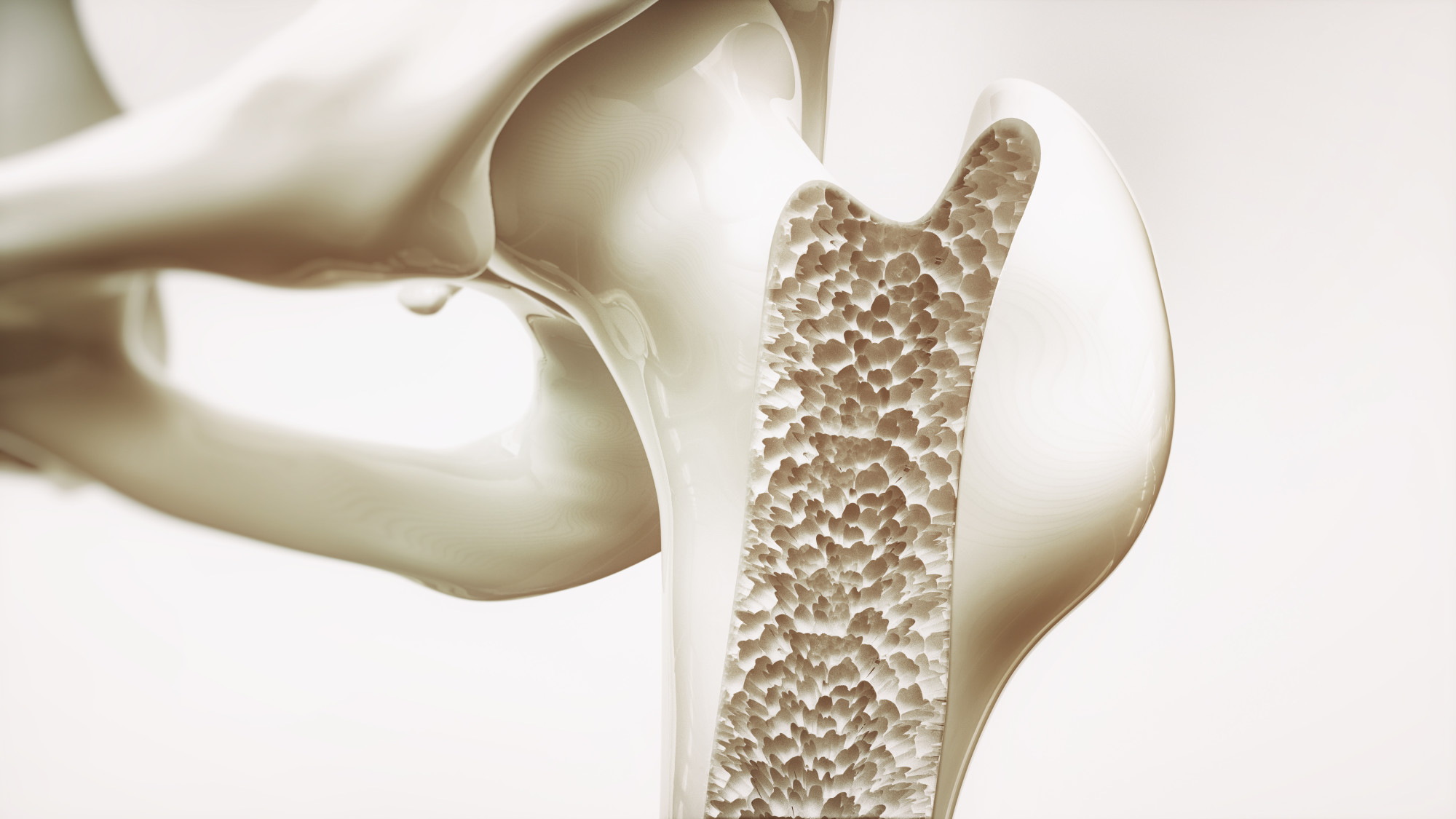What Is Osteoporosis: A Comprehensive Guide
|
Reading time: 5 minutes
|

One in three women and one in five men over the age of fifty are suffering from osteoporosis.
Osteoporosis is a disease in which the density and quality of bones are reduced. There is a variety of factors that put you at risk for it, as well as different types of osteoporosis.
If you are noticing frequent fractures, you may want to speak to your doctor about osteoporosis. Where does it come from, and how can you treat and prevent it?
Here are some facts.
1. Osteoporosis
Our bodies are designed to continually break down bone mass (resorption) and rebuild it.
Most of us have a strong bone density in our 20s, with peak bone mass usually occurring around age 30.
For people with osteoporosis, bone loss outpaces the growth of new bone. Bones become brittle and prone to fracture. In some cases, bones can get so brittle that even minor stresses like coughing or bending over can cause a fracture.
Spine and hip fractures in those with osteoporosis can have serious consequences. It could result in a loss of height, back pain, or deformity. A hip fracture could result in a loss of independence or even death.
2. Risk Factors
Lower sex hormones cause osteoporosis. The reduction of estrogen in women can get caused by menopause or certain cancer treatments. Thyroid problems can also lead to accelerated bone loss.
Low calcium intake can also contribute to a loss of bone density. You are more at risk if you have had medical problems such as cancer, celiac disease, irritable bowel syndrome, and arthritis.
Those who have a sedentary lifestyle will likely have weaker bones and be more at risk for osteoporosis. Regular weight-bearing activity will go a long way toward lowering your chances.
You will also have a great risk of developing osteoporosis if you smoke or drink more than two drinks a day. These cut down on the amount of calcium your body can absorb.
Osteoporosis is more common in women than in men because they tend to lose bone mass with age. You will also be more at risk if you have an eating disorder or a smaller body frame or are overweight.
A family history of osteoporosis is also a risk factor.
3. Types of Osteoporosis
Type 1 osteoporosis occurs in women who have gone through menopause who have decreased levels of estrogen.
Type 1 osteoporosis typically occurs in women ages 50 to 70 and is not common in men. When the strength in the bone decreases, it tends to result in fractures of the wrist and spine.
Type 2 osteoporosis is also known as senile osteoporosis. This condition occurs after age 70 and is twice as common in men as it is in women.
Type 2 osteoporosis leads to brittle bones. Unlike Type 1 osteoporosis, it is likely to lead to hip fractures.
4. Prevention
You can prevent osteoporosis before it starts. If you have an office job, try to get out three times a week for some type of weight-bearing exercise.
Jumping, walking, weight-lifting, and strength training can all help to strengthen your bones. Balancing exercises like tai chi and yoga can also help.
Be sure to get enough calcium in order to prevent osteoporosis and mitigate its effects. Low-fat dairy products and green leafy veggies are great sources. You can also get calcium from salmon, orange juice, and calcium-fortified cereals.
Protein is the building block of bone, so you should be certain to get enough in your diet. Most of us get enough protein from meats. Vegans or vegetarians can get theirs from nuts, legumes, and eggs.
Vitamin D is critical for helping your body absorb calcium. If you don’t get enough from the sun, you can also get it from fatty fish, cheese, egg yolks, and fortified milk. You may also want to consider adding a supplement to your daily nutrition routine.
5. Diagnosis and Treatment
If you suspect you may have osteoporosis, your doctor may measure you first to see if you have gotten shorter. The bones in the spine are often the first to lose mass.
Your doctor may also recommend a bone density test, such as a DEXA scan. This can detect osteoporosis at an early stage. Ultrasound may also get used, as well as blood and urine samples.
Some medications such as Fosamax treat and prevent osteoporosis by strengthening bones. It is alendronate, which keeps the body from breaking down bone.
Zoledronic acid may also be used. This a 15-minute infusion used to reduce fractures in the hip, spine, wrist, and legs.
A biological drug called denosumab is an injection that turns off the process that makes the body break down bones. You get it every six months. It may be an option for women who are postmenopausal and have a high risk of fracture when other medications do not work.
Menopausal hormone replacement therapy is used to preserve bone and prevent fractures. It uses estrogen or a combination of estrogen and progestin. It may prevent osteoporosis in high-risk women who have already tried treatments that don’t include estrogen.
Doctors usually don’t recommend hormone treatment simply to prevent osteoporosis.
Osteoporosis and You
If you are worried about osteoporosis, regular exercise, and a diet rich in calcium and vitamins can help you to prevent its onset. If you have been diagnosed with one of the types of osteoporosis, there are a number of treatment options available.
For more information on discount medicine, check our prices today.
Information provided on this website is for general purposes only. It is not intended to take the place of advice from your practitioner
